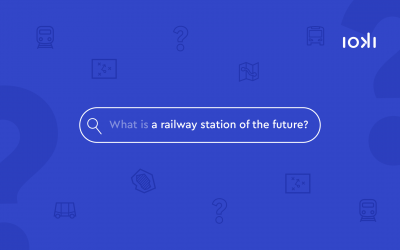There is no way around Hessen
We start with the state of Hessen. Hessen considers themselves a pioneer in the mobility turn and has documented this goal in the “Mobility strategy for Hessen 2035”. The objective of this strategy is to transport people sustainably, quickly, and safely to their destination through a better connection between different modes of transportation and more digital products. Of particularly high relevance is the densely populated Rhein-Main region with Frankfurt Airport and its many commuters. The region is innovative and pioneering through many trendsetting mobility concepts radiating towards the other regions of Hessen.
An important developing and networking platform for mobility in Hessen is the House of Logistics and Mobility – HOLM. Companies, start-ups, universities, research institutes, associations, and political institutions research, discuss and realise joint innovative solutions for mobility and logistics. Exchange formats like the yearly conference “sustainable mobility in a livable urban region – how we will travel in the future” or the public transport lab regularly offer new exchange formats to facilitate and implement new forms of mobility in Hessen.
Digital, Flexible, Emission Free: On-Demand Services in the Rhein-Main Region
One flagship project in Hessen with international radiance is the OnDeMo project of the Rhein-Main-Verkehrsverbund: 150 emission-free shuttles, 9 operating areas all in one app are aiming to complement the local public transit and by doing so, convincing almost 2 million people to use public transport.
Whether it is the HeinerLiner in Darmstadt, the kvgOF Hopper in the municipality of Offenbach or the Emil in the ten districts of the Taunusstein – the emission-free and partially barrier-free shuttles can easily bring people from A to B via the App. Over 320.000 passengers have used the flexible shuttles and travelled 1,8 million kilometres as of yet (numbers from the beginning of Oktober 2022). Different partners work together on the biggest on-demand undertaking in Europe, which is coordinated by the Rhein-Main-Verkehrsverbund. The software comes from the DB-daughter company ioki.
“We need solutions precisely where the next doctor or the next supermarket is not around the corner and people can’t be mobile without a car”, assures Tarek Al-Wazir, the federal minister of transport in Hessen.
Further developments are already planned: Up to 15 autonomous on-demand shuttles are expected to support the public transport in Darmstadt and in the region of Offenbach in 2023. A world premiere as usually only a limited number of autonomous shuttles with reduced speed are integrated into the local public transport.
What drives the mobility turn in Hessen?
The mobility turn is a key issue in Hessen. This is why the commission of enquiry “Mobility for the future in Hessen 2030” was appointed in 2020 to develop a transport concept for the entire state of Hessen.
In the committee Nahmobilität Hessen (short: AGNH) different cities, communities and districts in Hessen as well as universities, organisations and transport associations have joint forces to strengthen footpaths and bike traffic in Hessen with a variety of measures. This includes a number of bike superhighways in Hessen, like the one between Vellmar and Kassel. The construction of the first section of the 7,5-kilometre bike lane has already started in 2022. The federal and state government have allocated funds covering up to 80% of the total costs of the project.
The cities of Darmstadt and Frankfurt are already one step ahead. From 2023 onwards, people can leave their cars parked and use the approximately 30 kilometres of cycling path. On this route one can find service stations that, for example, enable the riders to fill up their tires with air. The Task Force Bike Lanes and special bike lane planning teams will ensure in the upcoming years that more and more residents in Hessen will use the bike in their day-to-day life.
A different kind of propulsion will be under way in the Taunus region of Hessen. The world’s biggest hydrogen-powered train fleet will be used from 2023 onwards. 27 emission-free and almost noise-free trains manufactured by Alstom will operate on four non-electrical routes in the region of the Rhein-Main-Verkehrsverbund. The industry park Höchst will provide the hydrogen needed for the regional trains as they produce hydrogen as a byproduct and operate their own hydrogen buses.
Public transport for all – being active for the mobility turn
The citizens of Hessen also advocate actively for the mobility transition. In August 2022 approximately 8500 people rode in a 4,5-kilometre-long bike demonstration across the Rhein-Main region. Instead of cars, bikes and other means of transportation used the busy commuter motorways A648 and A66. The goal: the state parliament of Hessen in Wiesbaden. The signatures of over 70.000 people were presented to the state government of Hessen supporting a petition for a referendum to advocate for a mobility turn law.
Although the petition for a referendum will not come into existence due to a formal error – the citizens of Hessen and the local politicians as well as the regional transport companies have recognised how much potential their state has to realise an emission free mobility of the future.
If you are interested in more information about the mobility strategy of Hessen, click here.



